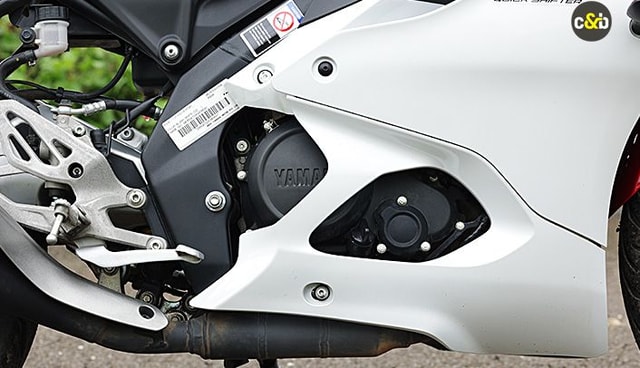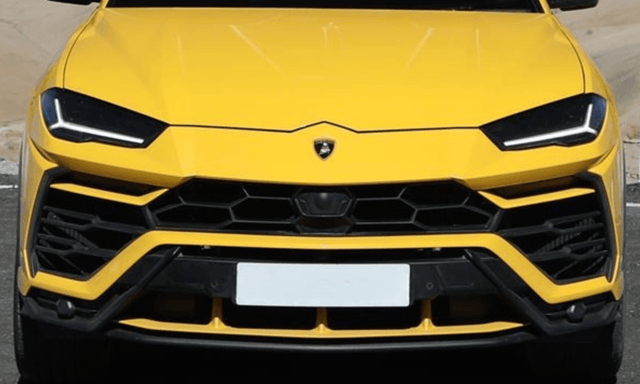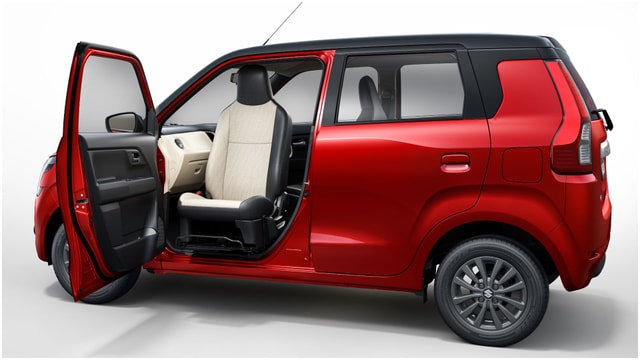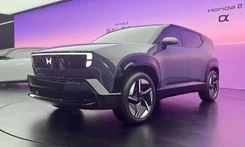Stellantis To Invest 30 Billion Euros To Develop EVs

- Stellantis' investment is for electrification and software development
- Stellantis plans to achieve increased profitability in the coming years
- The Stellantis electrification roadmap encompasses the entire value chain
Stellantis presented a comprehensive electrification strategy for the company's iconic brands, while leveraging in-house expertise, partnerships and joint ventures to deliver advanced technology at affordable prices. This strategy will allow the company to target sustainable, double-digit adjusted operating income margins in the mid-term. To execute this strategy, Stellantis plans to invest more than 30 billion euro through 2025 in electrification and software development, including equity investments made in joint ventures to fund their activities, while targeting to continue to be 30 per cent more efficient than the industry with respect to total Capex and R&D spend versus revenues.
"The customer is always at the heart of Stellantis and our commitment with this EUR 30 billion plus investment plan is to offer iconic vehicles that have the performance, capability, style, comfort and electric range that fit seamlessly into their daily lives," said Carlos Tavares, Chief Executive Officer, Stellantis.
Also Read: 2022 Jeep Grand Cherokee 4xe Plug-In Hybrid SUV Revealed

On Stellantis EV Day, the company also revealed the first image of the 2022 Jeep Grand Cherokee 4xe plug-in hybrid SUV
Stellantis plans to achieve increased profitability in the coming years. This will be supported by the execution of the synergy opportunities arising from the formation of Stellantis, with a forecast of annual cash synergies of more than 5 billion euro at steady state, the roadmap of battery cost reductions, and the continued optimization of distribution and production costs and realization of new revenue streams, in particular from connected services and future software business models.
As a result, Stellantis is targeting to achieve sustainable, double-digit adjusted operating income margins in the mid-term (~2026), making the company a benchmark in profitability in the provision of electrified mobility to customers on a global basis.
Also Read: Stellantis Announces First Plant Dedicated To EVs In UK
Stellantis intends to become the market leader in low-emission vehicles (LEVs). Through 2030, Stellantis' LEV mix for passenger cars in Europe is targeted to steadily grow to over 70% - 10 percentage points ahead of current industry assumptions for overall market mix. In the U.S., Stellantis' LEV mix for passenger cars and light-duty trucks is expected to be more than 40% by 2030..

Through 2030, Stellantis' Low Emission Vehicles (LEV) mix of passenger cars in Europe is targeted to steadily grow to over 70%
The company remains committed to growing its commercial vehicle leadership in Europe and strengthening its position in North America while aiming to be the global leader in e-commercial vehicles. Leveraging knowledge and embracing synergies, the commercial vehicle electrification rollout will extend to all products and all regions over the next three years, including the delivery of hydrogen fuel cell medium vans by the end of 2021
The Stellantis electrification roadmap encompasses the entire value chain. The company's EV battery sourcing strategy is to secure more than 130 gigawatt hours (GWh) of capacity by 2025 and more than 260 GWh by 2030. The EV battery and component needs will be met with a total of five "gigafactories" in Europe and North America, completed with additional supply contracts and partnerships to support total demand.
Also Read: Stellantis To Produce Four Electric Vehicles At Italy's Melfi Plant From 2024: Report
Stellantis has signed memorandums of understanding (MOUs) with two lithium geothermal brine process partners in North America and Europe to ensure a sustainable supply of lithium, identified as the most critical battery raw material with regard to availability, as well as have the ability to integrate lithium into the supply chain once available.

Stellantis has signed memorandums of understanding (MOUs) with two lithium geothermal brine process partners in North America and Europe
In addition to sourcing strategies, Stellantis' technical expertise and manufacturing synergies will drive battery costs lower. Electric vehicle battery pack costs are targeted to be reduced by more than 40% from 2020 to 2024 and by more than an additional 20% by 2030. All aspects of the battery pack play a role in reducing the costs - optimizing the overall pack, simplifying the format of the modules, increasing the size of the battery cells and upgrading the battery chemistry.
The company intends to maximize the full value of the battery life cycle through repair, remanufacturing, second-life use and recycling, as well as ensure a sustainable system that prioritizes customer needs and environmental concerns. Affordability is a priority at Stellantis, as the company is targeting for the total cost of ownership of EVs to be equivalent to internal combustion engine vehicles by 2026.
Trending News
 1 min readYamaha YZF-R2 Name Trademarked In India
1 min readYamaha YZF-R2 Name Trademarked In India 1 min readTriumph Tracker 400: In Pictures
1 min readTriumph Tracker 400: In Pictures
Latest News
 car&bike Team | Dec 19, 2025Next-gen Audi Q3 Spied In India Ahead Of Launch In 2026Third-gen Q3 made its global debut in mid-2025, getting notable tech upgrades and electrified powertrain options.2 mins read
car&bike Team | Dec 19, 2025Next-gen Audi Q3 Spied In India Ahead Of Launch In 2026Third-gen Q3 made its global debut in mid-2025, getting notable tech upgrades and electrified powertrain options.2 mins read car&bike Team | Dec 19, 2025Yamaha YZF-R2 Name Trademarked In IndiaThe Yamaha R15, one of Yamaha India’s most popular motorcycle models, is likely to continue, even when the R2 finally makes it debut.1 min read
car&bike Team | Dec 19, 2025Yamaha YZF-R2 Name Trademarked In IndiaThe Yamaha R15, one of Yamaha India’s most popular motorcycle models, is likely to continue, even when the R2 finally makes it debut.1 min read car&bike Team | Dec 18, 2025KTM 160 Duke With TFT Dash launched At Rs 1.79 LakhThe 5-inch colour TFT dash is borrowed from the 390 Duke and is shared across the brand’s sub-400cc lineup.2 mins read
car&bike Team | Dec 18, 2025KTM 160 Duke With TFT Dash launched At Rs 1.79 LakhThe 5-inch colour TFT dash is borrowed from the 390 Duke and is shared across the brand’s sub-400cc lineup.2 mins read car&bike Team | Dec 18, 2025Lamborghini Urus Seized By Cops Following Viral Clip Of Speeding On Bandra-Worli Sea LinkThe car was seized after a video of it allegedly overspeeding on the Bandra–Worli Sea Link, where the speed limit is capped at 80 kmph, went viral.2 mins read
car&bike Team | Dec 18, 2025Lamborghini Urus Seized By Cops Following Viral Clip Of Speeding On Bandra-Worli Sea LinkThe car was seized after a video of it allegedly overspeeding on the Bandra–Worli Sea Link, where the speed limit is capped at 80 kmph, went viral.2 mins read car&bike Team | Dec 18, 20252025 Ducati XDiavel V4 India Launch Details RevealedThe new Ducati XDiavel V4 will be launched towards the end of December 2025 and will sit alongside the standard Ducati Diavel V4.3 mins read
car&bike Team | Dec 18, 20252025 Ducati XDiavel V4 India Launch Details RevealedThe new Ducati XDiavel V4 will be launched towards the end of December 2025 and will sit alongside the standard Ducati Diavel V4.3 mins read Amaan Ahmed | Dec 18, 2025Maruti WagonR Swivel Front Seat Kit Launched: Check Price, AvailabilityBangalore-based startup TrueAssist Technology Private Limited has developed a mechanism that allows the front passenger seat to swivel outwards, in a bid to improve accessibility for the aged and persons with disabilities.2 mins read
Amaan Ahmed | Dec 18, 2025Maruti WagonR Swivel Front Seat Kit Launched: Check Price, AvailabilityBangalore-based startup TrueAssist Technology Private Limited has developed a mechanism that allows the front passenger seat to swivel outwards, in a bid to improve accessibility for the aged and persons with disabilities.2 mins read
 Bilal Firfiray | Dec 19, 2025Maruti Suzuki e-Vitara Review: Worth The Wait?After a long wait, the first-ever electric Maruti Suzuki is here. It’s the e-Vitara, and it comes with a few promises. But arriving this late, is it worth the wait? Or is it a case of too little, too late?9 mins read
Bilal Firfiray | Dec 19, 2025Maruti Suzuki e-Vitara Review: Worth The Wait?After a long wait, the first-ever electric Maruti Suzuki is here. It’s the e-Vitara, and it comes with a few promises. But arriving this late, is it worth the wait? Or is it a case of too little, too late?9 mins read Bilal Firfiray | Dec 18, 2025Mercedes-Benz G450d: The Subtle Power of EvolutionThe Mercedes-Benz G 450d evolves subtly with more power, improved efficiency, and modern tech, while staying true to the timeless G-Class design. And character.4 mins read
Bilal Firfiray | Dec 18, 2025Mercedes-Benz G450d: The Subtle Power of EvolutionThe Mercedes-Benz G 450d evolves subtly with more power, improved efficiency, and modern tech, while staying true to the timeless G-Class design. And character.4 mins read Janak Sorap | Dec 11, 2025Harley-Davidson X440 T First Ride Review: Smarter and SharperHarley-Davidson has taken the X440 and given it a more focused and engaging twist. The result is the X440 T—essentially the same platform but updated in areas that give the motorcycle more appeal and riders more thrill.5 mins read
Janak Sorap | Dec 11, 2025Harley-Davidson X440 T First Ride Review: Smarter and SharperHarley-Davidson has taken the X440 and given it a more focused and engaging twist. The result is the X440 T—essentially the same platform but updated in areas that give the motorcycle more appeal and riders more thrill.5 mins read Shams Raza Naqvi | Dec 10, 20252025 Mini Cooper Convertible Review: More Colour On Indian RoadsThe updated Mini Cooper Convertible is set to be launched in the Indian market in the next few days. We drive it around Jaisalmer for a quick review.5 mins read
Shams Raza Naqvi | Dec 10, 20252025 Mini Cooper Convertible Review: More Colour On Indian RoadsThe updated Mini Cooper Convertible is set to be launched in the Indian market in the next few days. We drive it around Jaisalmer for a quick review.5 mins read Bilal Firfiray | Dec 8, 2025Tata Sierra Review: India’s New Favourite?Marking its return after a few decades, the reborn Sierra has made everyone sit up and take notice. But is it worth the hype?10 mins read
Bilal Firfiray | Dec 8, 2025Tata Sierra Review: India’s New Favourite?Marking its return after a few decades, the reborn Sierra has made everyone sit up and take notice. But is it worth the hype?10 mins read


































































































































